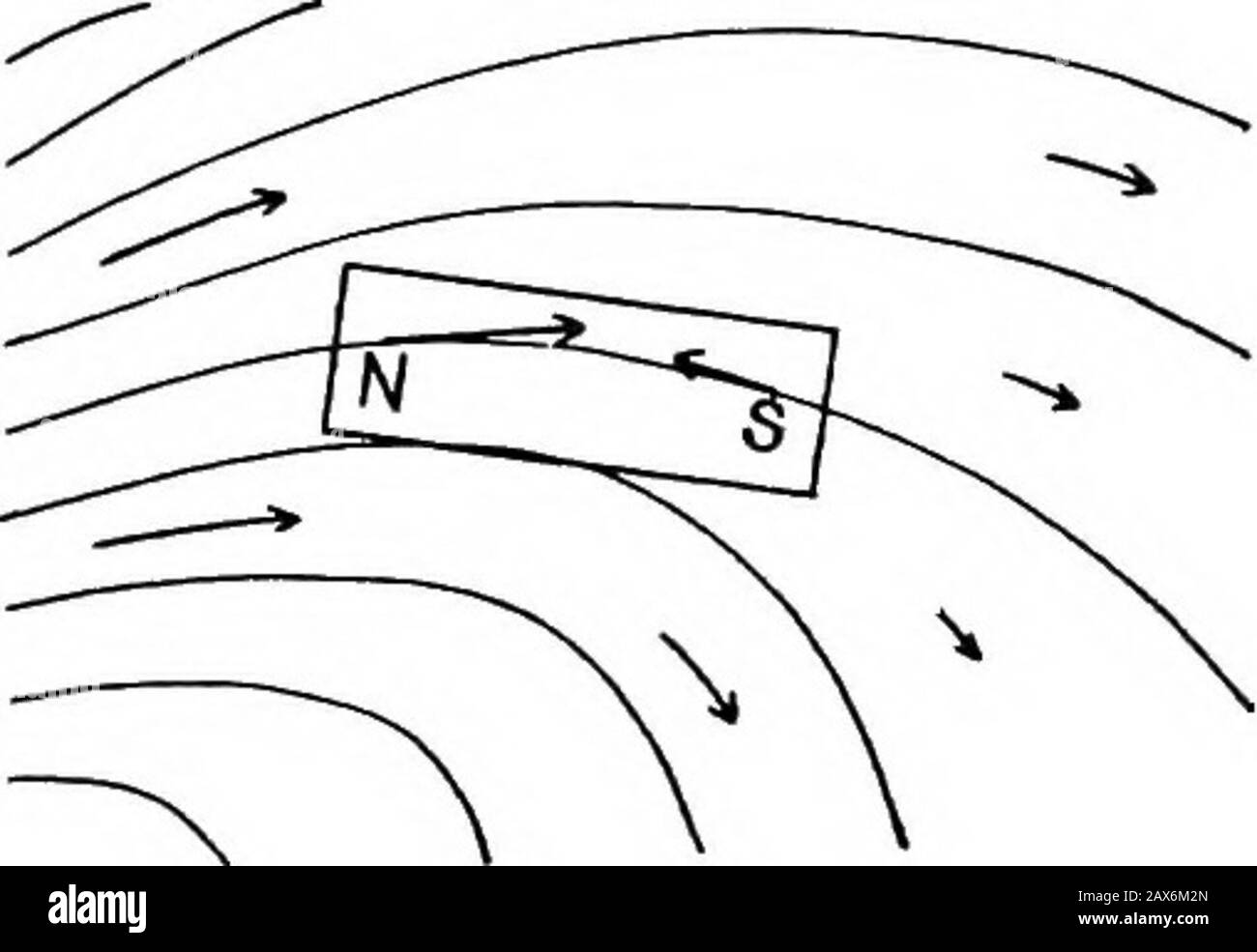Fields of force; supplementary lectures, applications to meteorology; . Fig. 18. fluid, which is the oscillation which brings it into water masseswith different motions. Fig. 18, 6 shows the corresponding forcesacting on the poles of an induced magnet of diamagnetic polarity.And, as is evident at once from the similarity of these figures,the heavy body in the hydrodynamic field will be acted upon by aforce which oppositely corresponds to the force to which a diamag-netic body is subject in the magnetic field. The well known laws for the motion of magnetic and diamag-netic bodies in the magneti

Image details
Contributor:
The Reading Room / Alamy Stock PhotoImage ID:
2AX6M2NFile size:
7.1 MB (131.1 KB Compressed download)Releases:
Model - no | Property - noDo I need a release?Dimensions:
1904 x 1312 px | 32.2 x 22.2 cm | 12.7 x 8.7 inches | 150dpiMore information:
This image is a public domain image, which means either that copyright has expired in the image or the copyright holder has waived their copyright. Alamy charges you a fee for access to the high resolution copy of the image.
This image could have imperfections as it’s either historical or reportage.
Fields of force; supplementary lectures, applications to meteorology; . Fig. 18. fluid, which is the oscillation which brings it into water masseswith different motions. Fig. 18, 6 shows the corresponding forcesacting on the poles of an induced magnet of diamagnetic polarity.And, as is evident at once from the similarity of these figures, the heavy body in the hydrodynamic field will be acted upon by aforce which oppositely corresponds to the force to which a diamag-netic body is subject in the magnetic field. The well known laws for the motion of magnetic and diamag-netic bodies in the magnetic field can, therefore, be transferred atonce to the motion of the light and heavy bodies in the hydro-dynamic field. The most convenient of these laws is that of 44 FIELDS OF FORCE. Faraday, which connects the force with the absolute intensity, or to the energy, of the field. Remembering the reversed direc-tion of the force, we conclude that: Tlie light body icill move in the direction of decreasing, the lieavybody in the direction of increasing energy of the field.